Observatory roofs seem to be my Achilles heel. By 2023 the third iteration of the roof was beginning to get difficult to open again. Rusty trolley wheel axles being the primary culprit.
I was also unhappy with the amount of moisture getting into the observatory. We live at 220 metres and regularly are enveloped in low cloud and winds that will drive rain vertically up through the smallest of gaps. Most of this wet stuff is coming trough the gap between the roll of roof and the observatory sides.
With a new £5000 mount stuffed full of electronics, having my own clouds inside the observatory didn’t seem like a good idea, so I had been using a waterproof cover over the scope and mount. This raised another problem of the wind coming in through all these gaps, caused to it to rub against anything it touched and take the paint off.
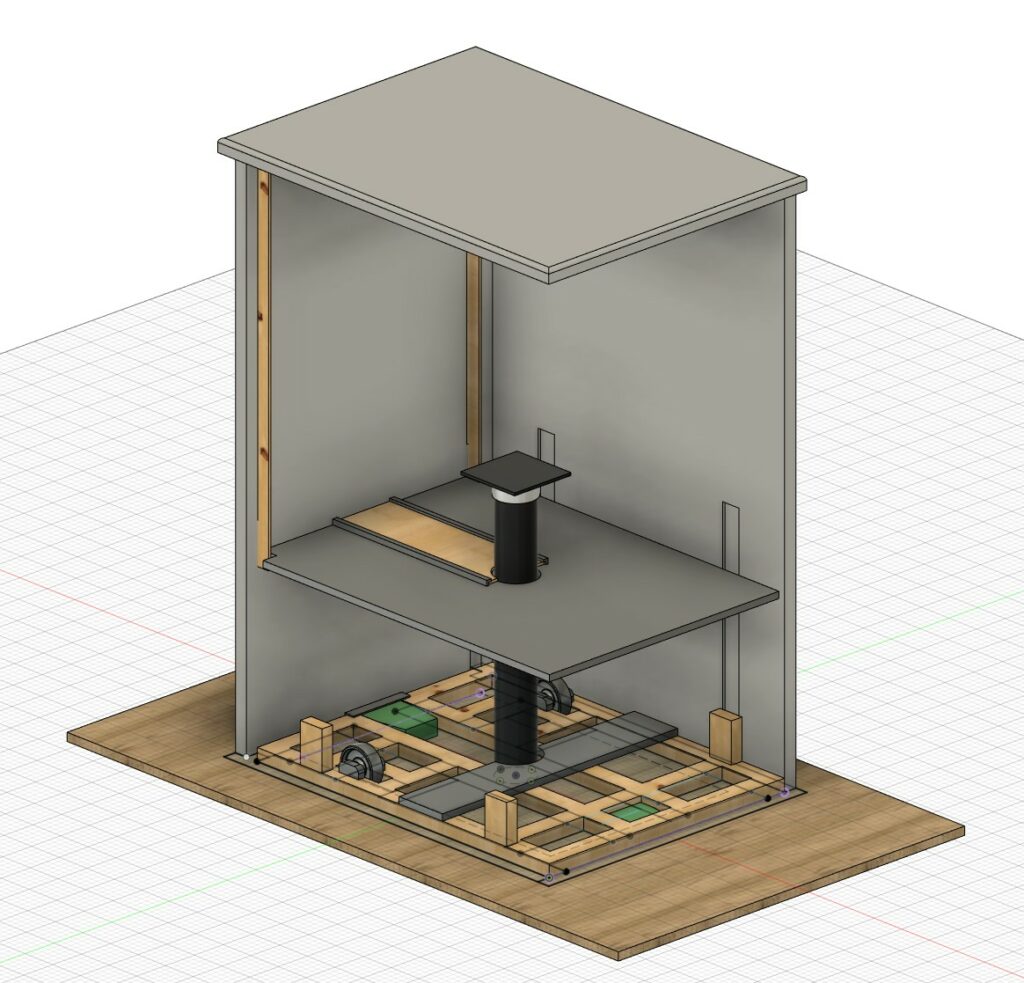
In the end I decided to radically rethink the whole observatory and came up with the above design, which is basically a roll off shed. I didn’t want to completely dismantle the previous observatory, so decided to keep the existing walls and place the new roll off shed design inside it. This gave me the advantage of some degree of wind protection for the structure inside. The box is partitioned into two compartments, the upper of which seals the mount, scope and all the electrics from the elements and can be heated during the winter if necessary.
So onto the build.

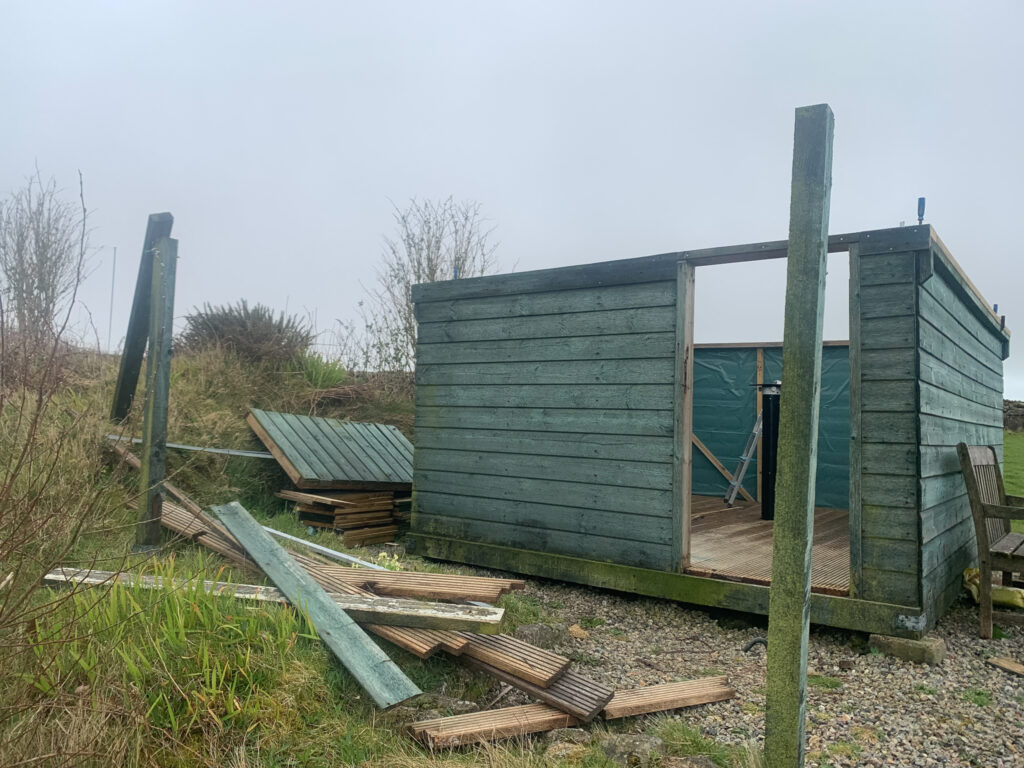
The first task was to remove all the old roof runner hardware; the door and all the plywood inner lining and then add a new 50mm x 150mm topside rail around the of the sides. I now have somewhere to put my tea when out observing.
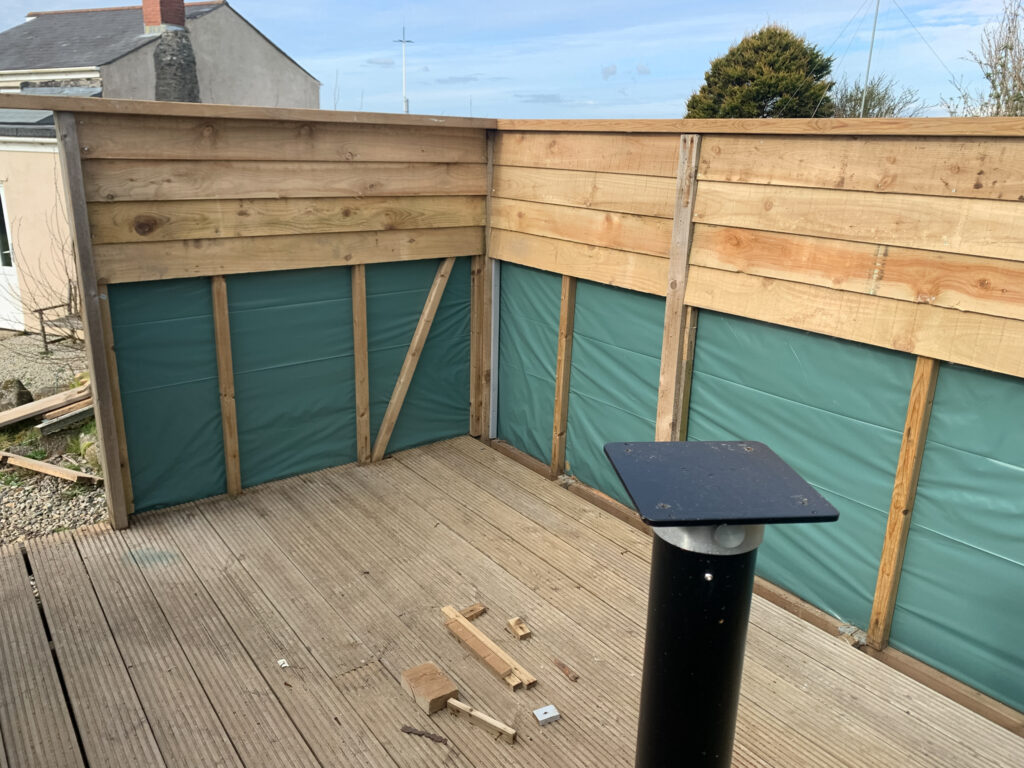
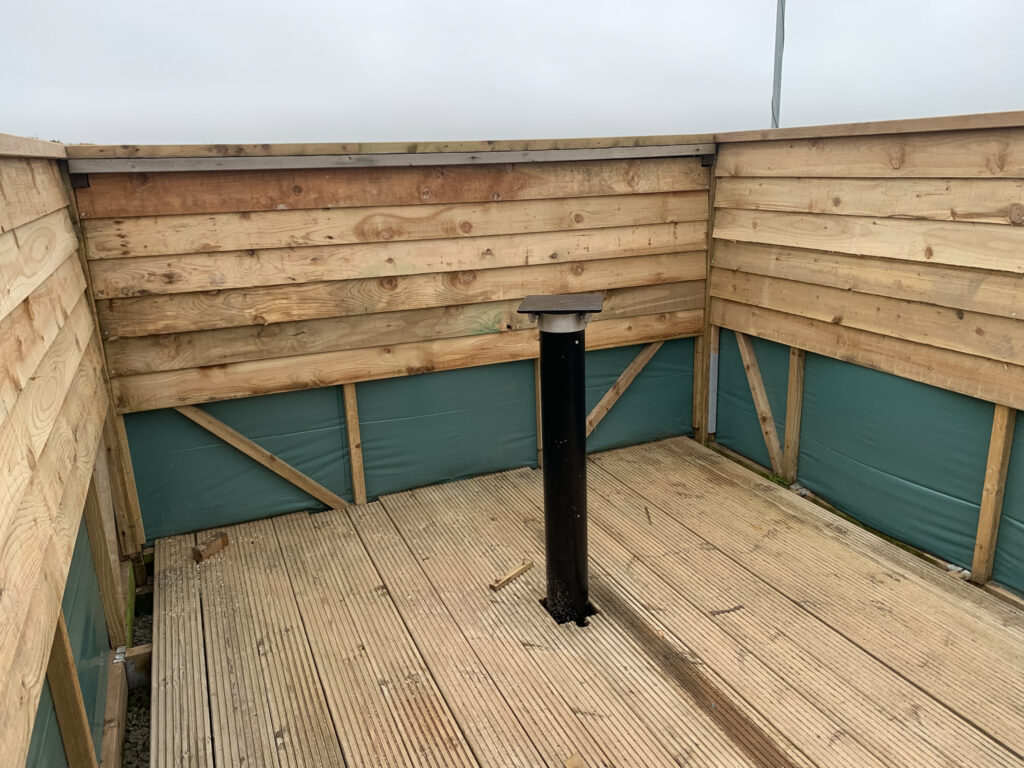
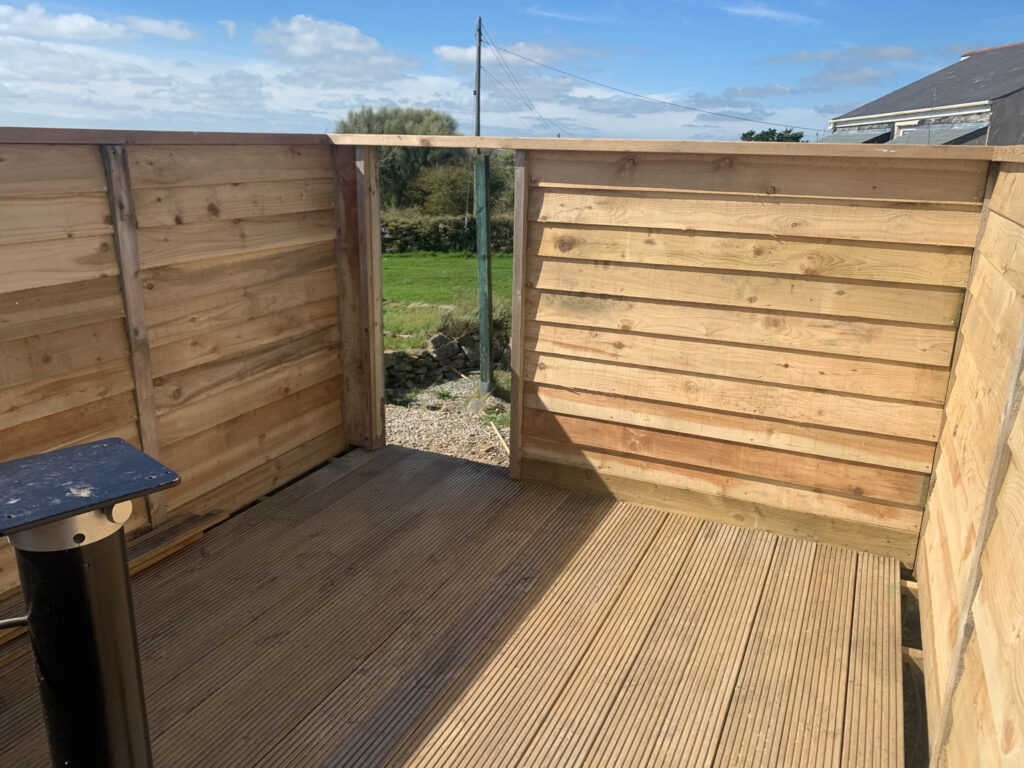
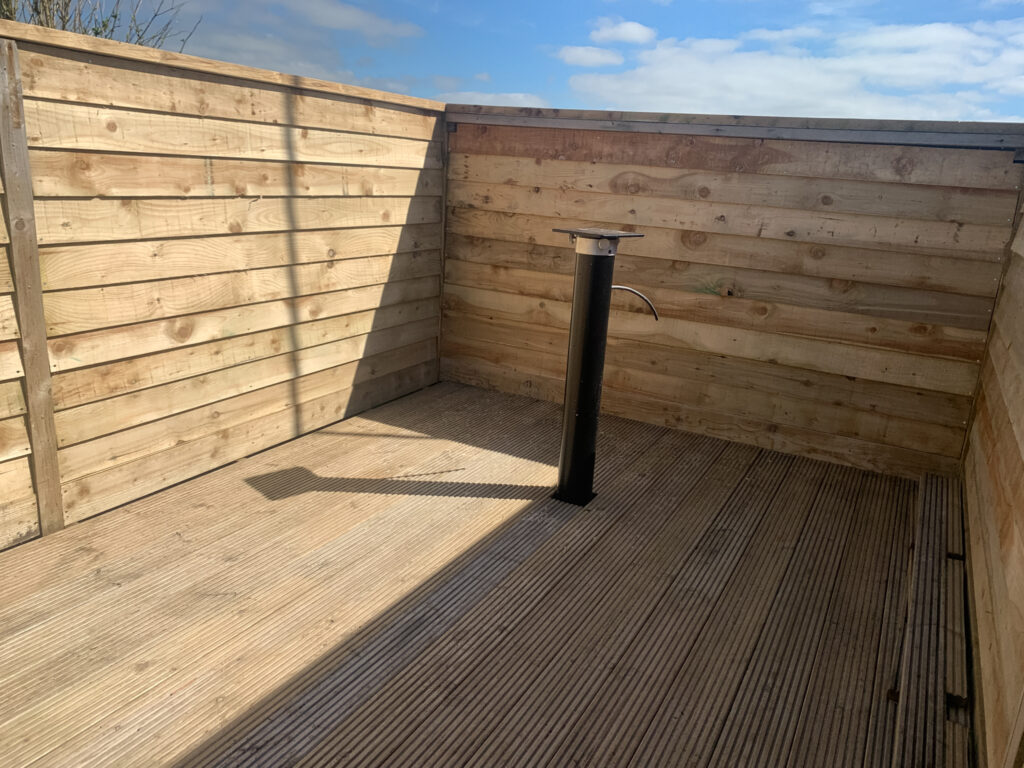
To line the inside walls, I plumped for 150mm wide featherlap. It was cheap as chips compared to shiplap but still gave a nice finish, which could be coated with a clear preserver to protect it from the elements.
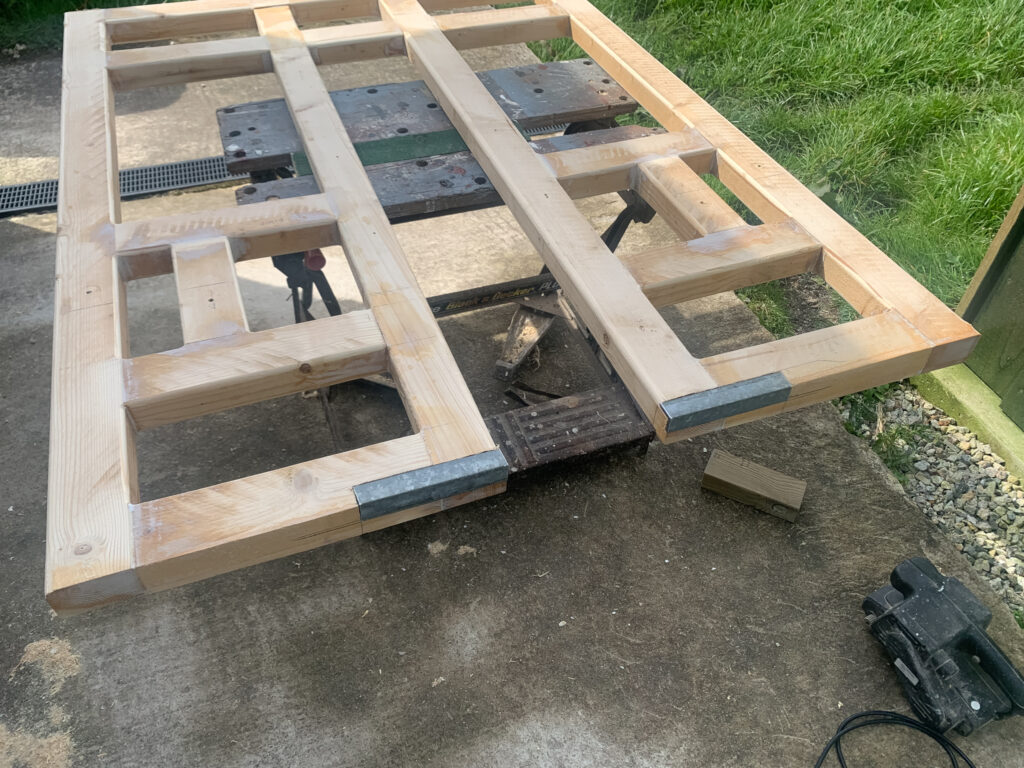
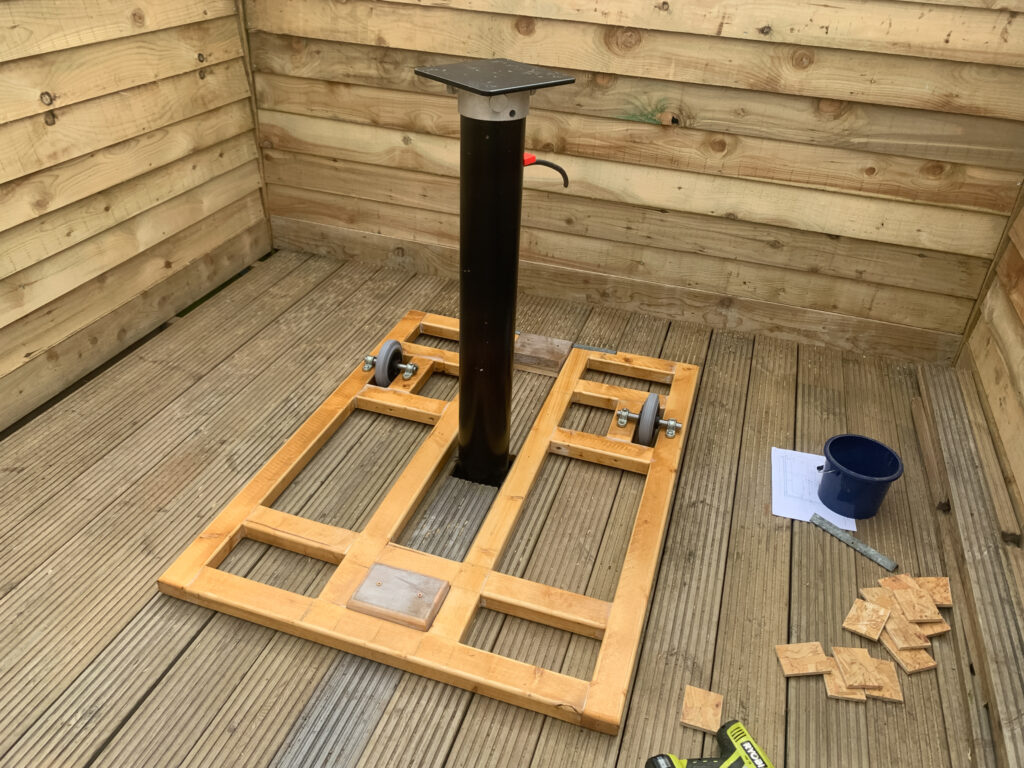
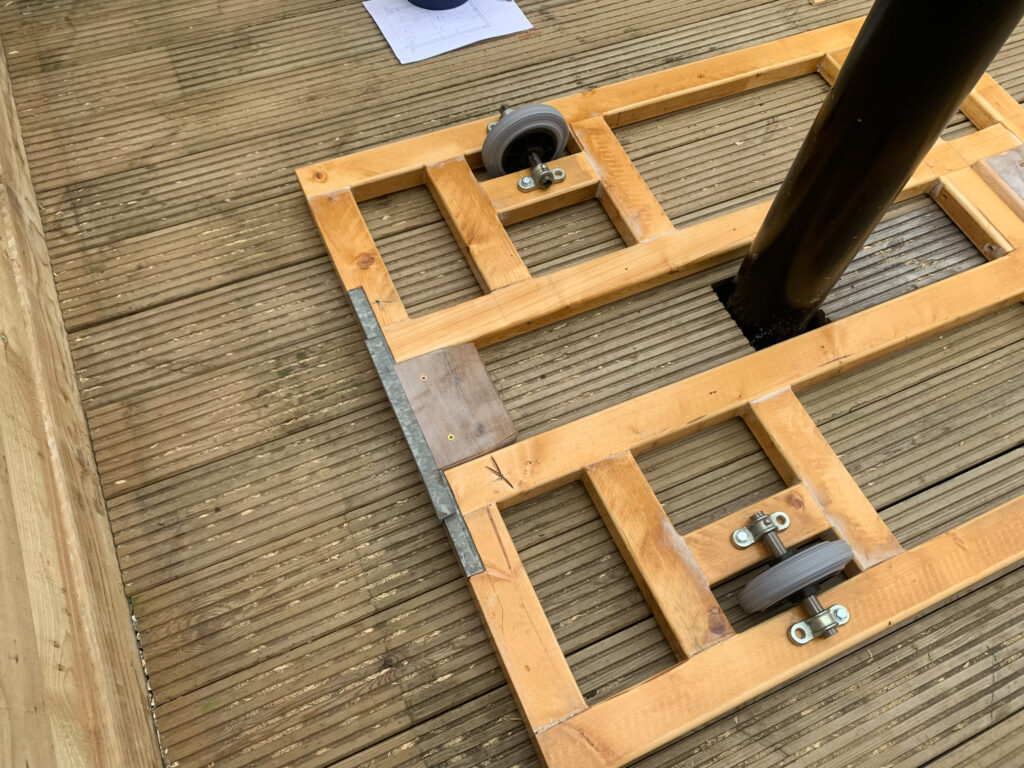
The major supporting structure is made of an epoxy coated wooden frame, which allows all the forces acting on the foam to be transferred back down the observatory floor. To hold everything down, I used four up and over catches which connected with a 30mm x 30mm angle iron bolted to the floor. Even in the 60-70mph winds we get here, this observatory isn’t going anywhere.
The frame runs on a couple of wheels and you only have to lift the back of the structure by 30mm at the back to allow the assembly to run freely backwards away from the pier. The wheels have stainless roller bearings, so are never going to rust up.
A couple of wooden blocks bolted to the floor allow the framework to be guided past the pier and also stop the framework lifting at the door end and sliding from side to side.
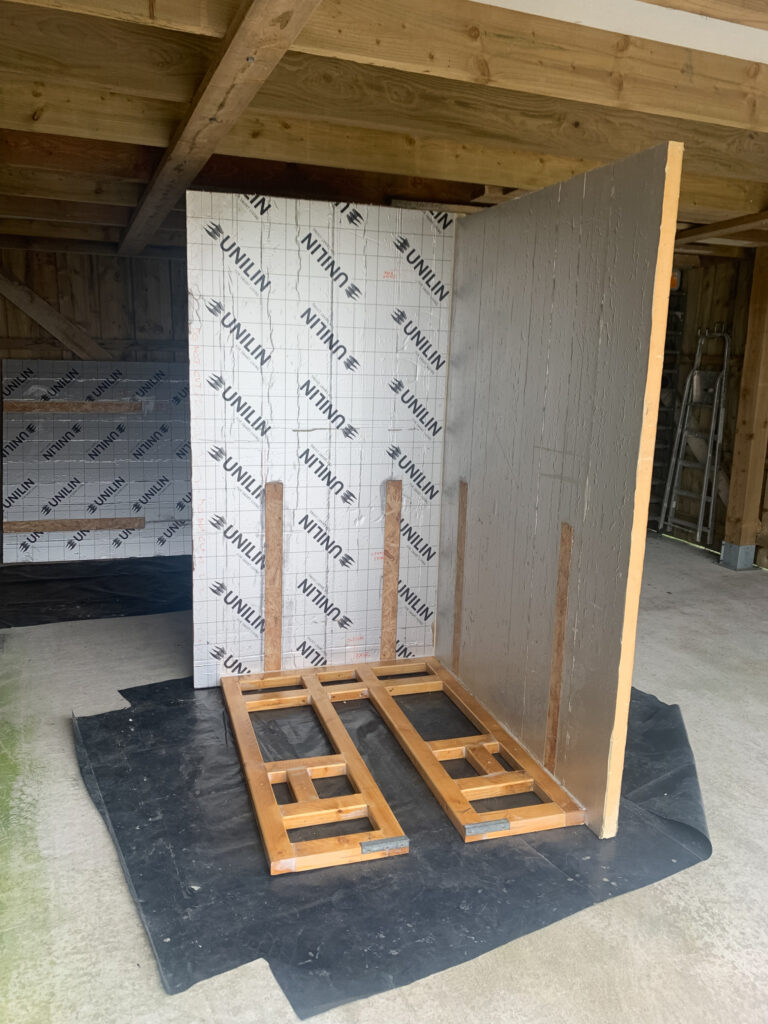
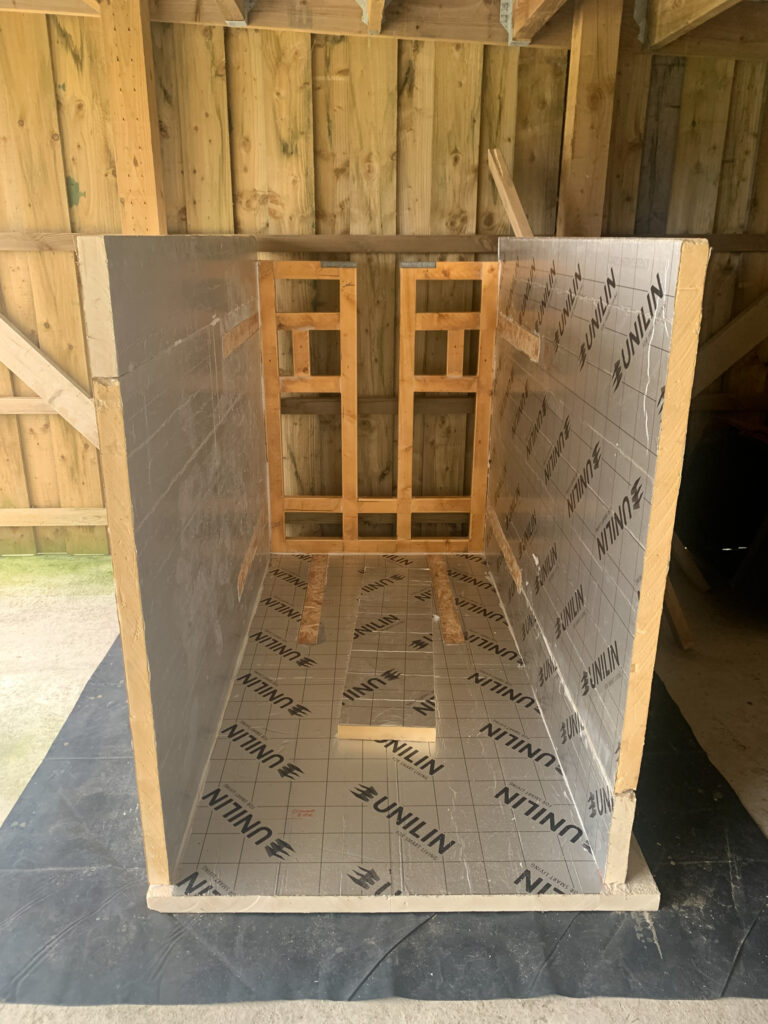
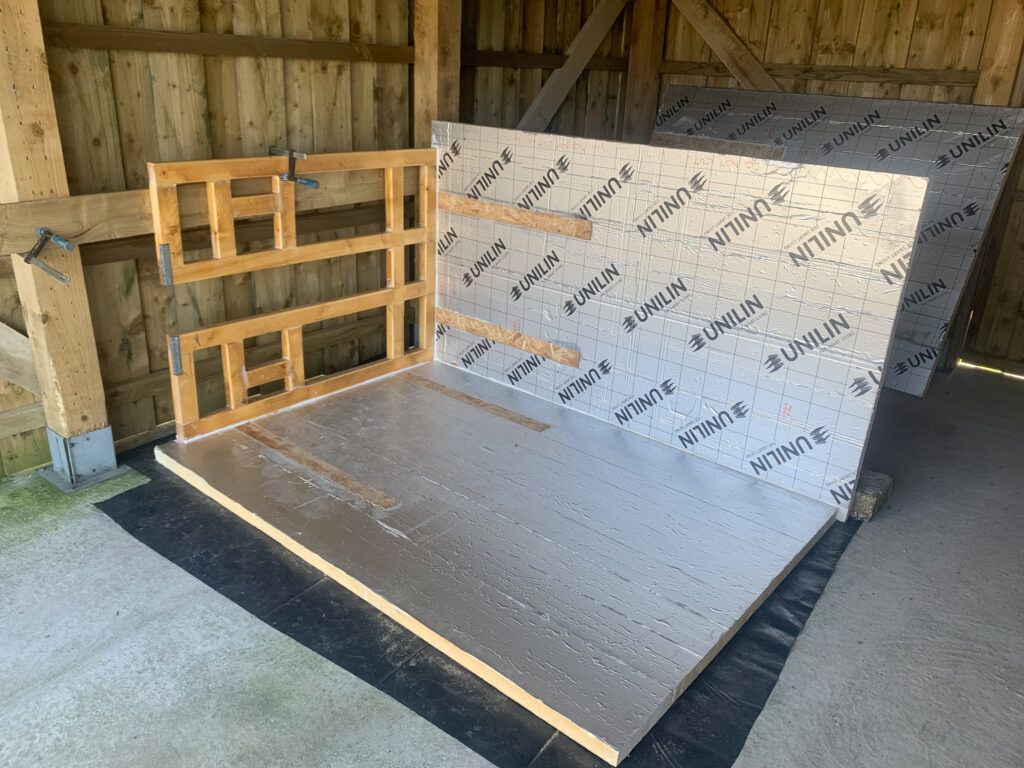
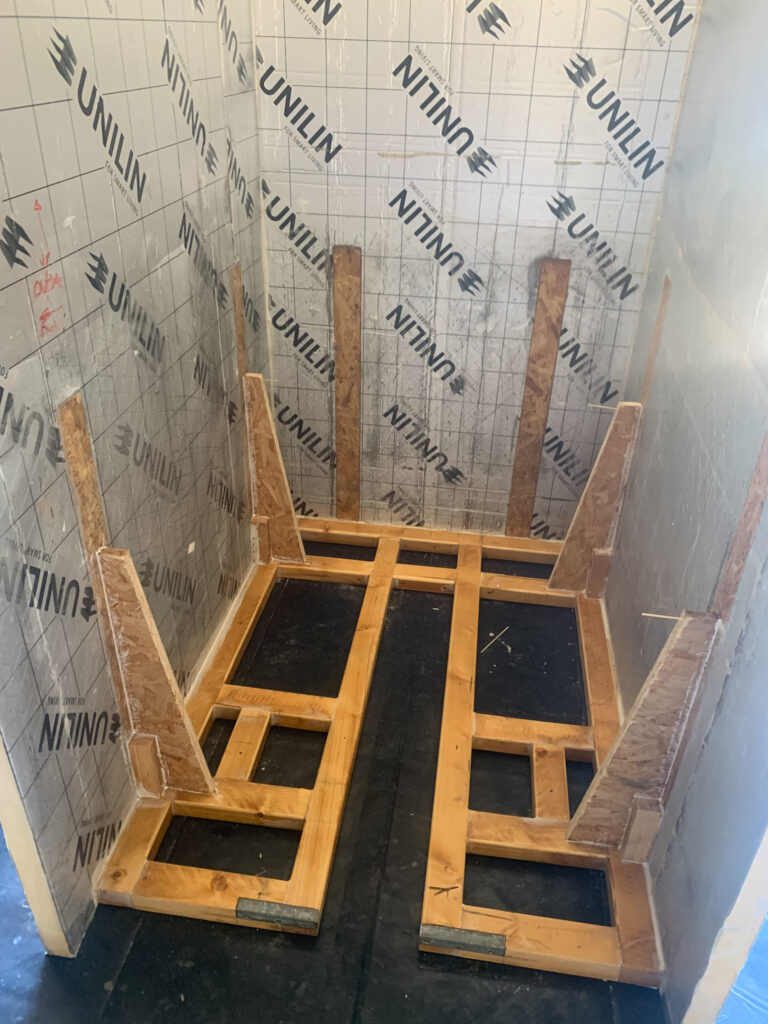
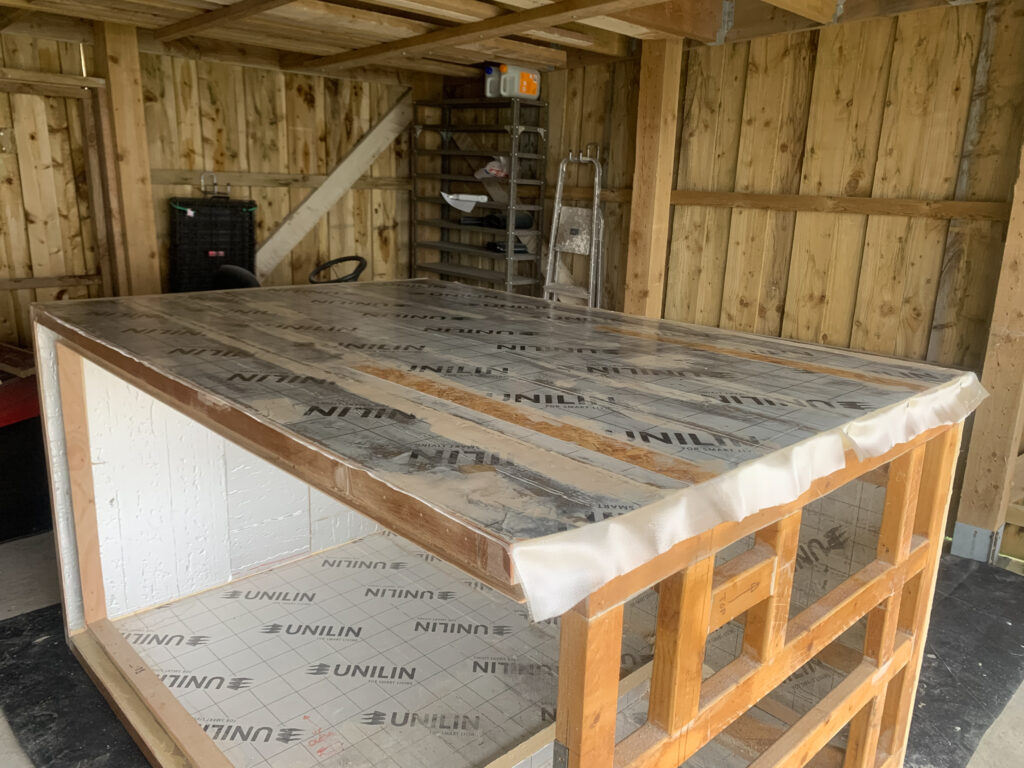
To keep things light, I used 50mm thick insulation board foam, which was then coated with a thin layer of surfboard woven fibreglass cloth and epoxy resin. The other advantages of using foam is that it insulates the inside against the Summer heat and Winter cold throughout the season. The other plus is the weight and incredible strength.
To load spread all the forces, 10mm x 50mm x 1000mm strips were epoxied into the foam panels. These are all screwed and epoxied into the base framework as are the 4 tapered wood braces which add additional support and load transference.
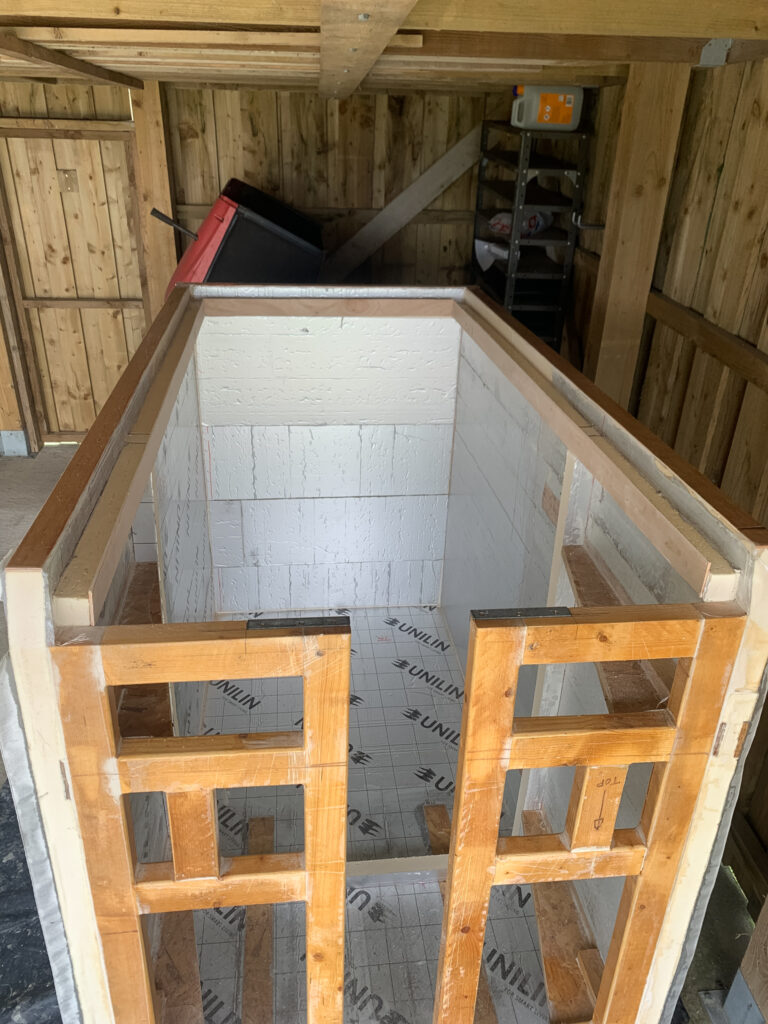
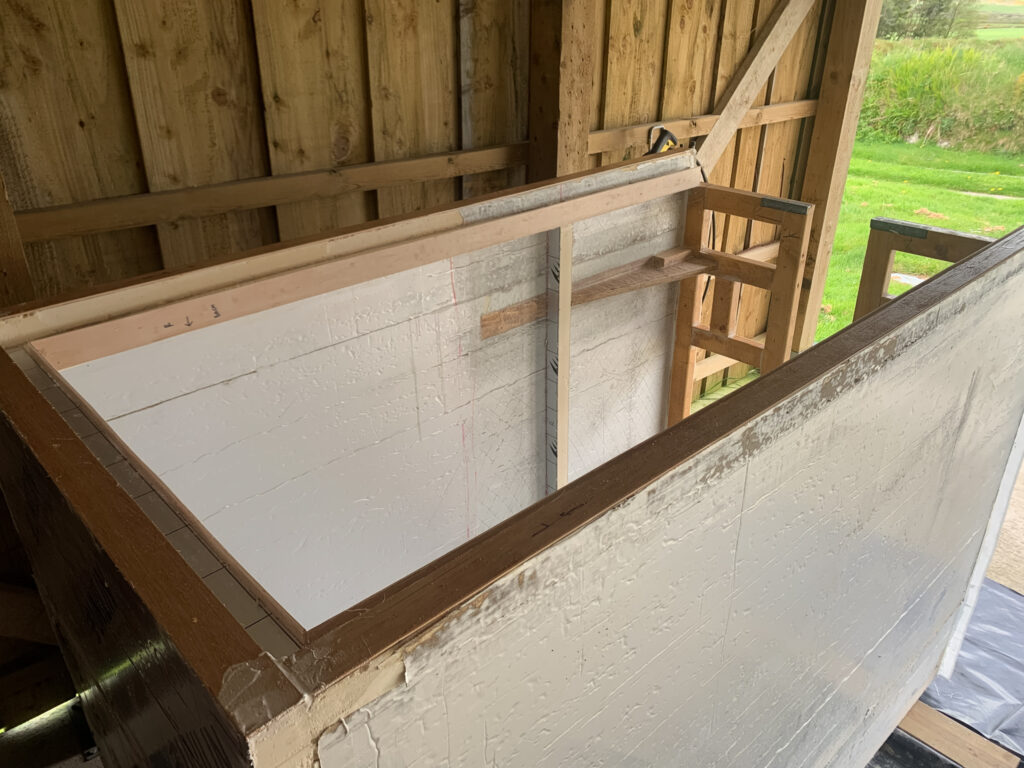
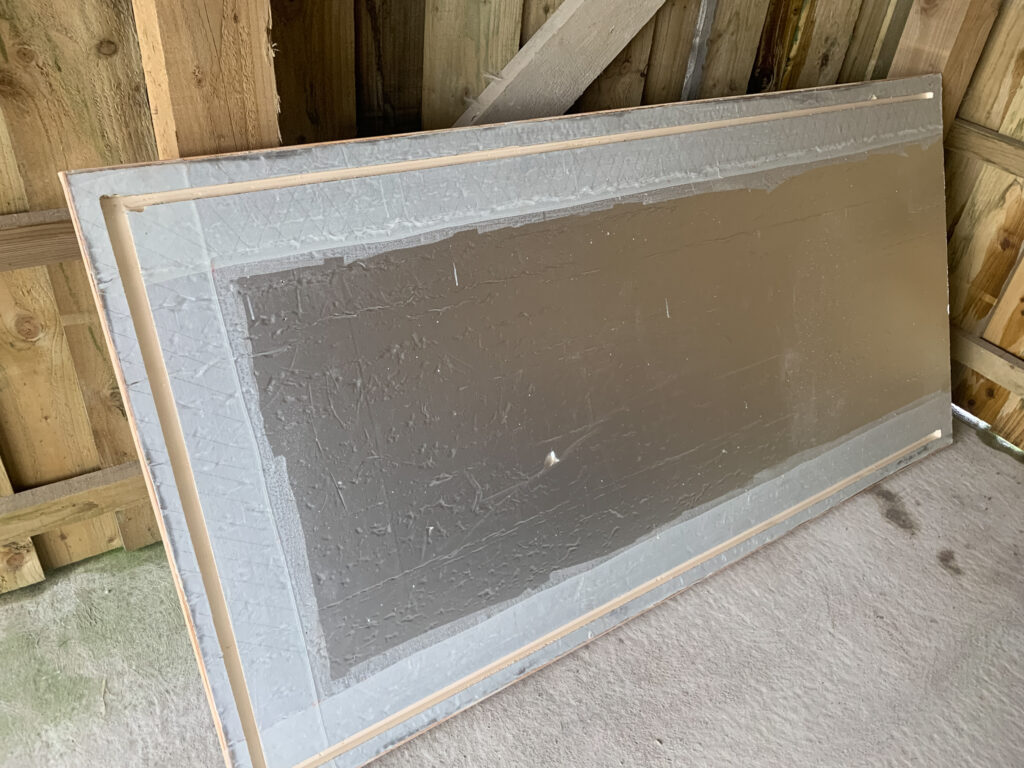

To keep water out, a lipped seal was constructed around the opening. The lip then sits inside a groove on the door panel. The door will be held in place by four loops of shockcord.
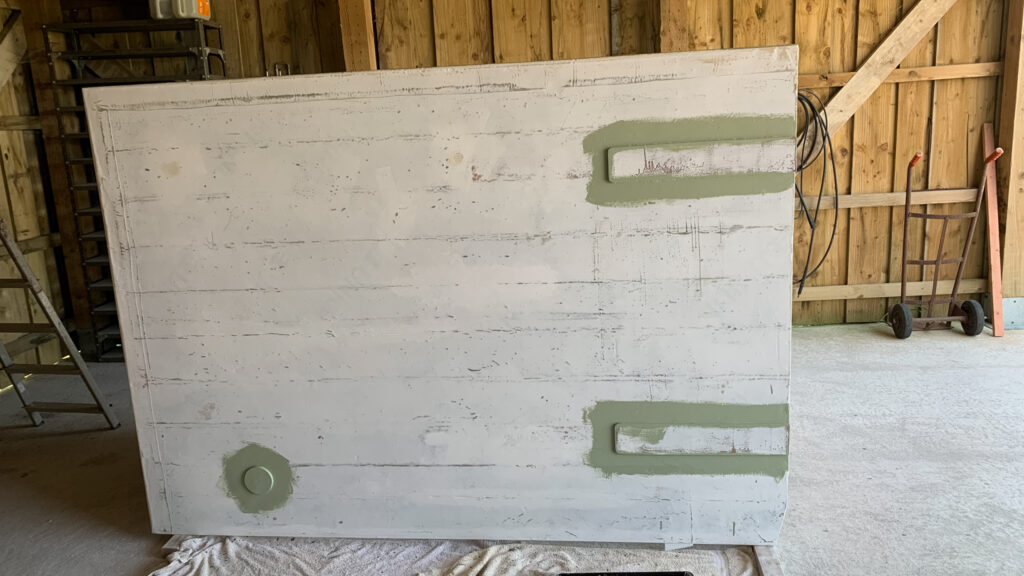
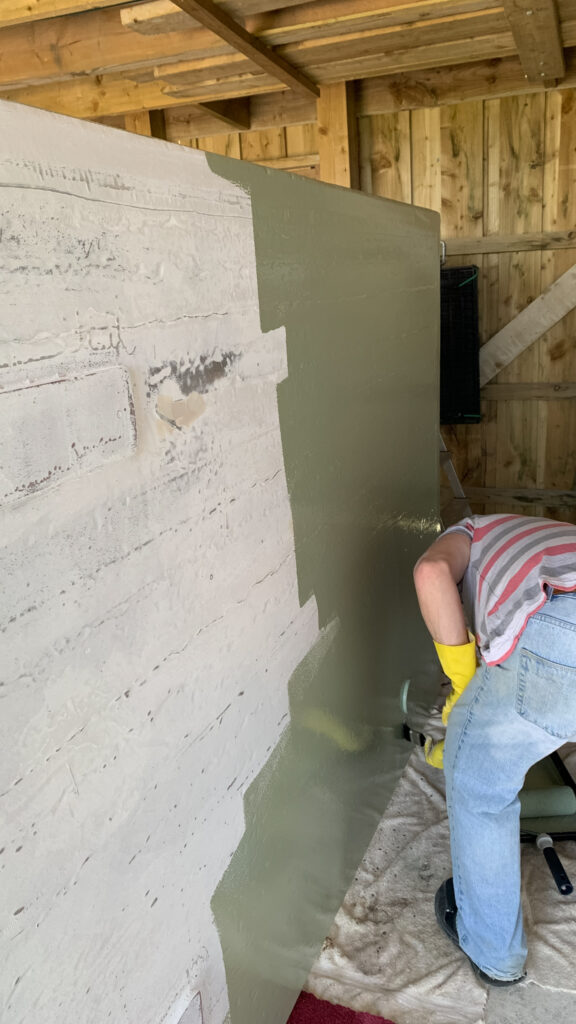
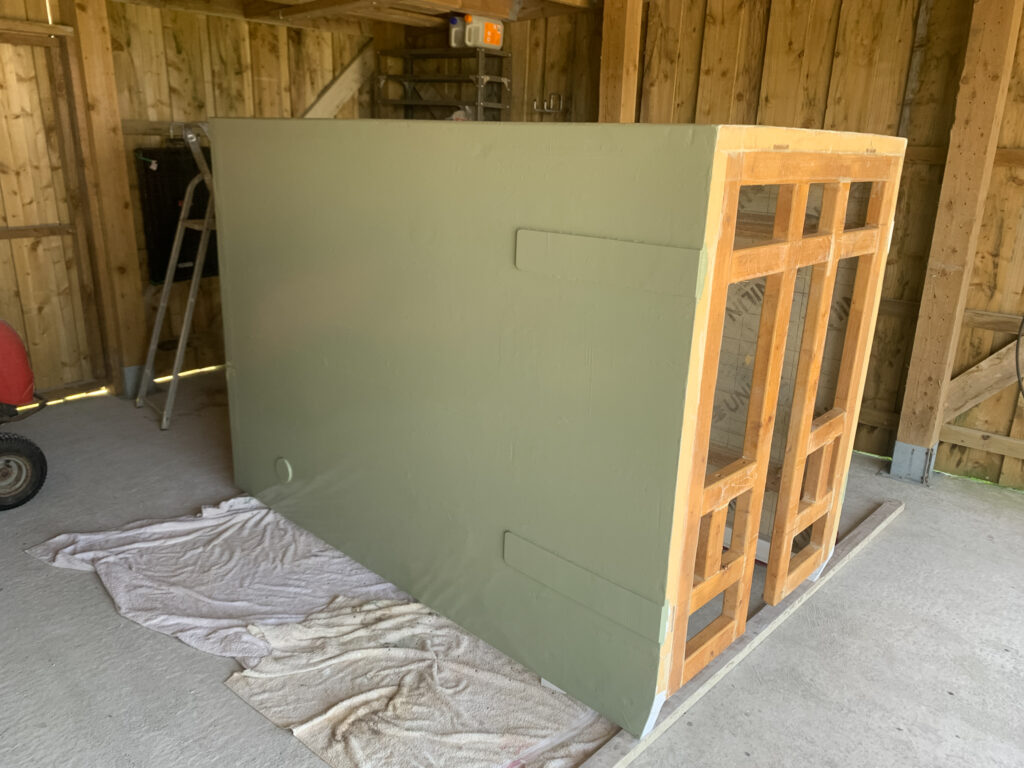
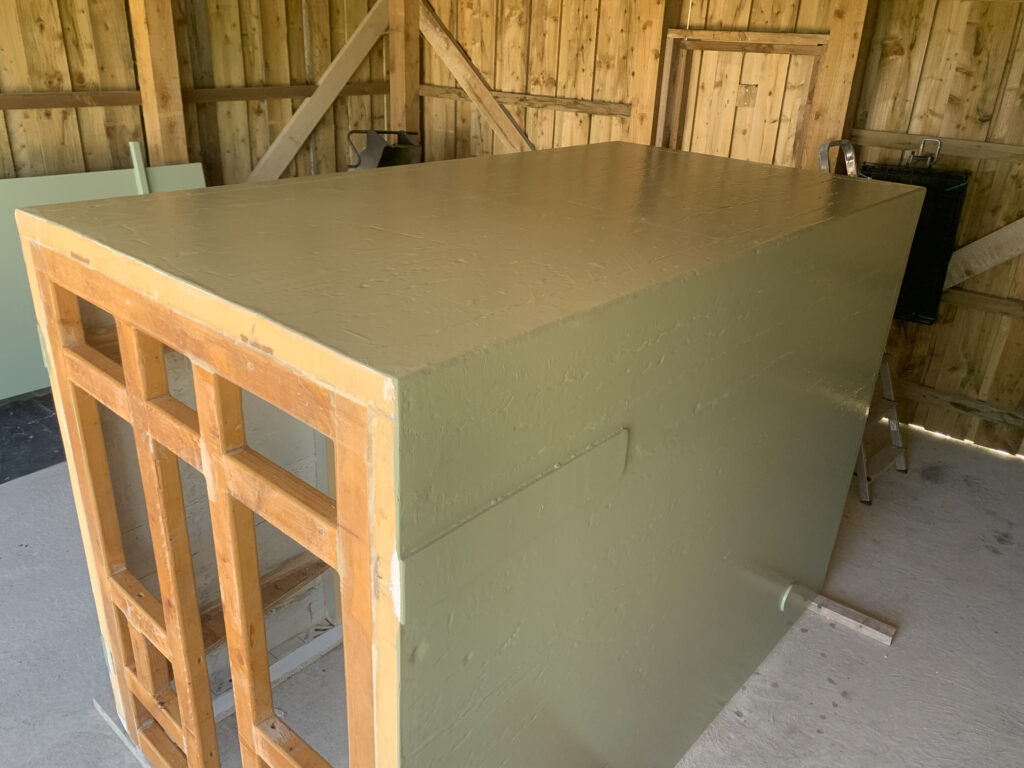
After coating in resin, all outside surfaces were painted with a two part polyester primer followed by a hard wearing exterior single pack paint.

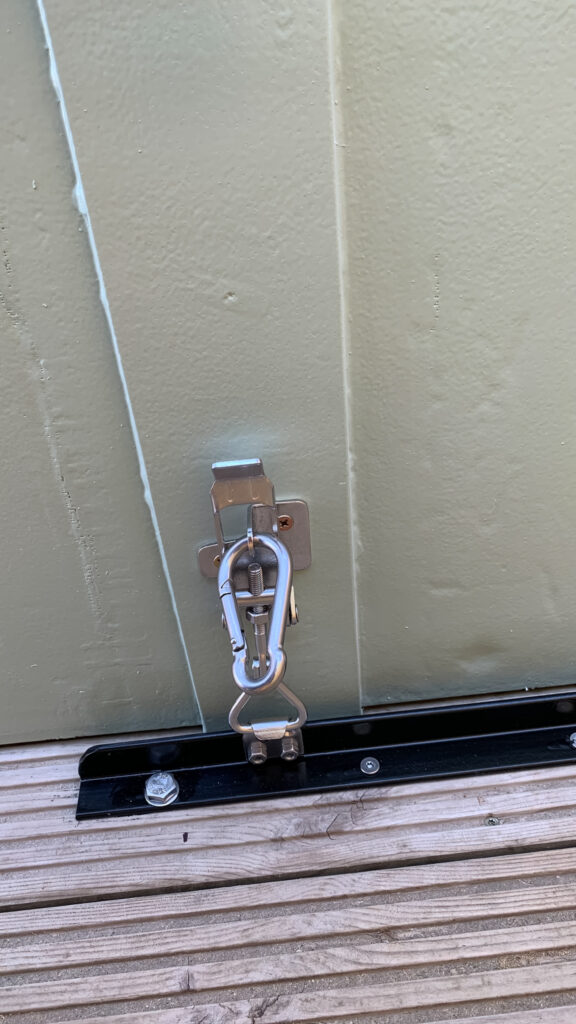
The four up and over clasps attach the box to the floor by way of the angle iron bolted to the floor framework.

I 3D printed the red brackets that hold the shockcord then then just passes over the door braces to hold the door in place. While this sounds a little naff, it is so simple to make, is easily repaired, requires no mechanical engineering and is easy to open and close the door panel with minimum of fuss in the dark.
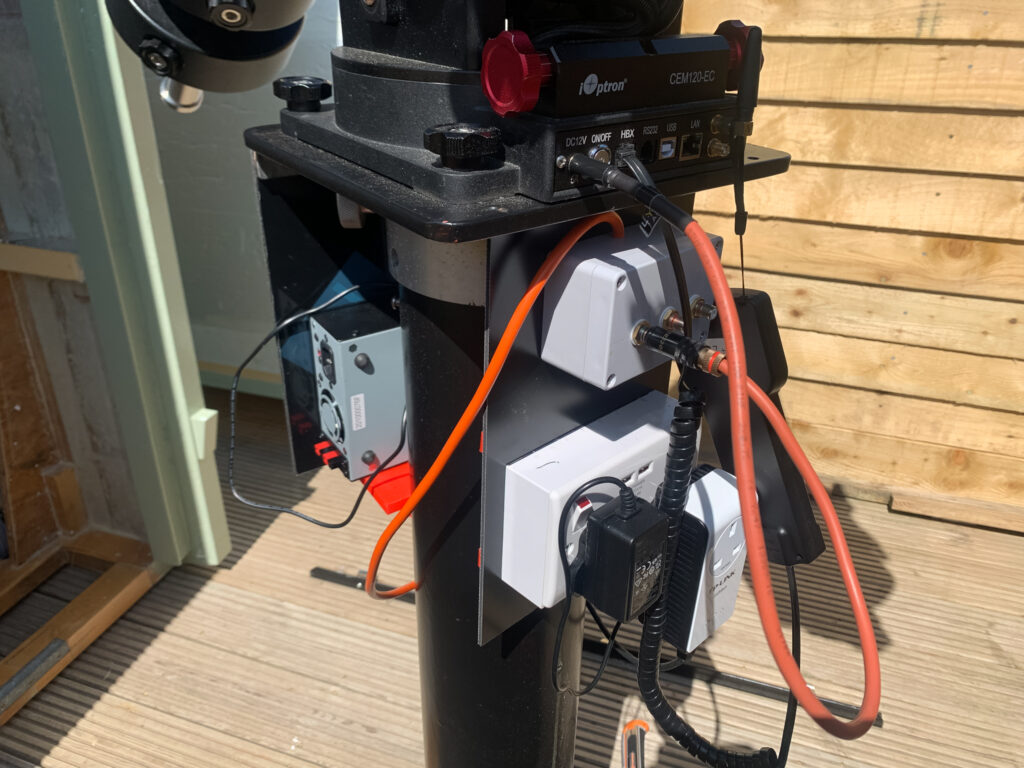
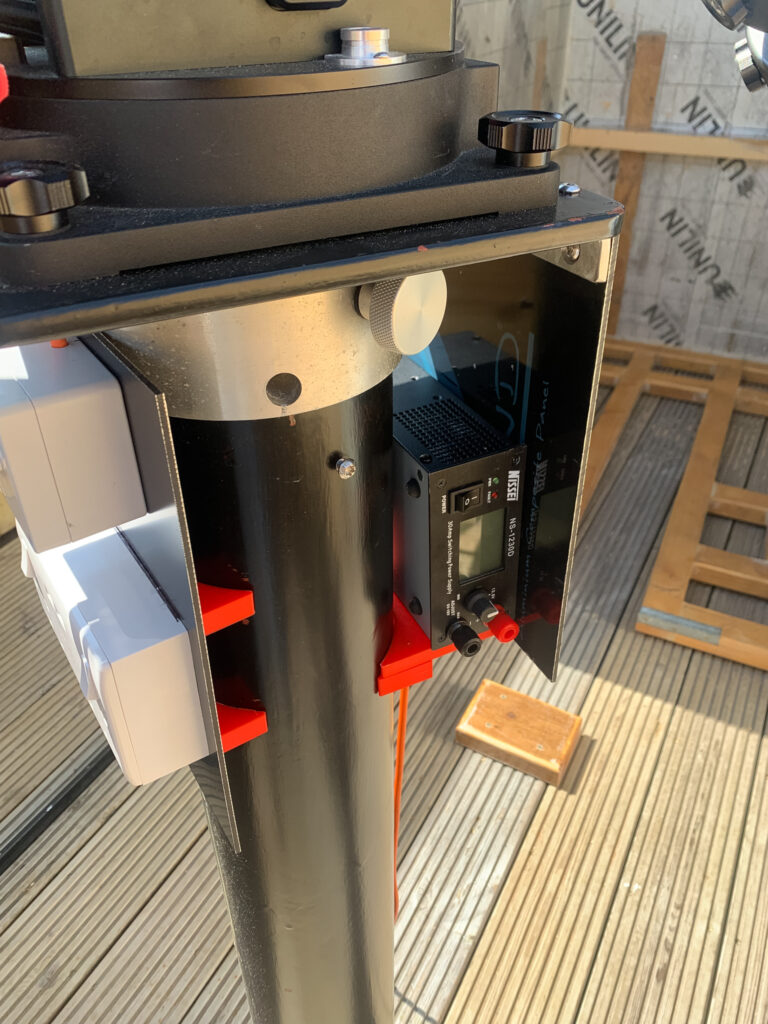
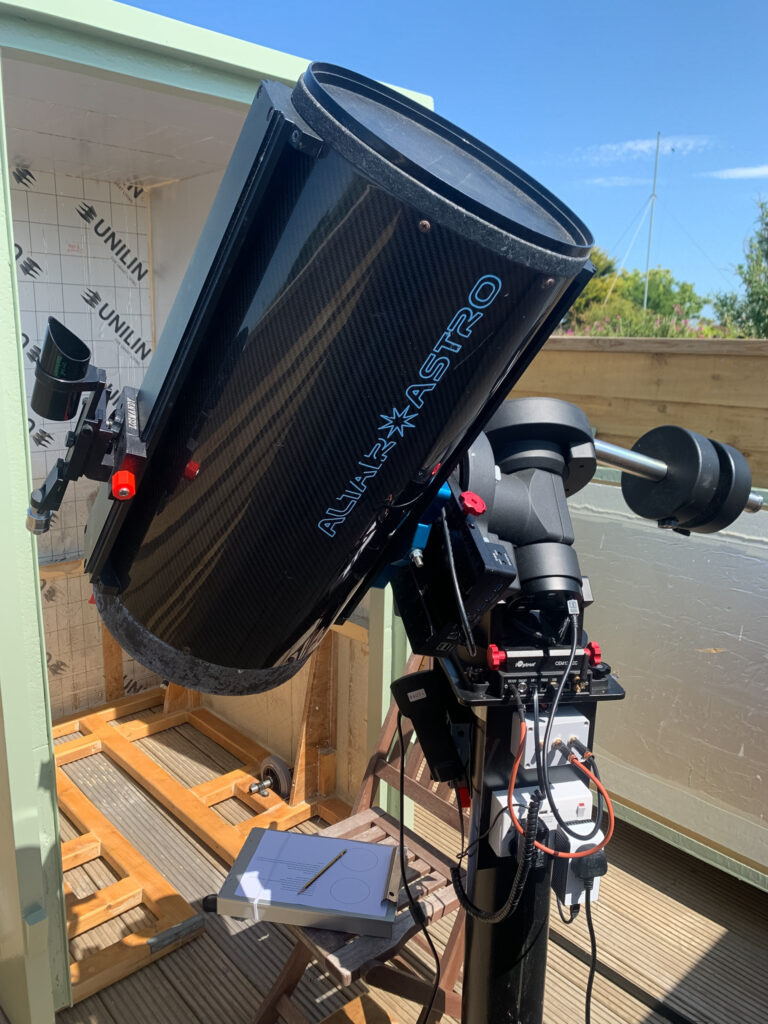
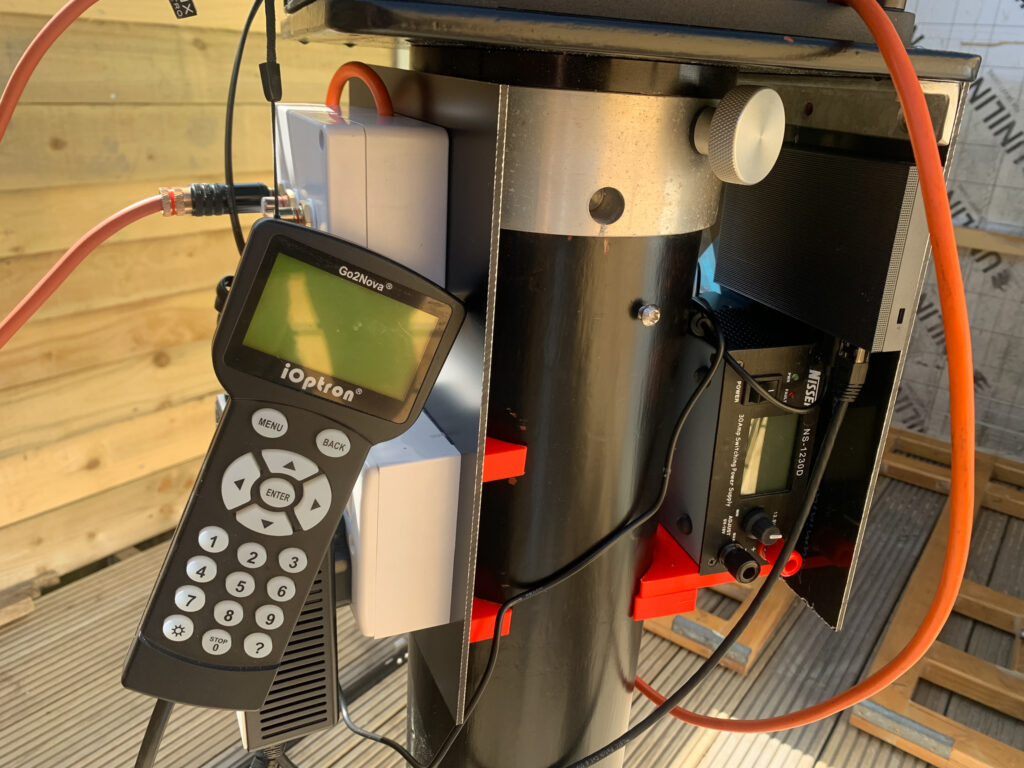
I’m running mains power up through the pier, from there, a 30 amp power supply provides 12 volts to the mount, dew heaters, mini PC and cameras through the ‘in mount’ cabling. I’m also using the Powerline system to get a wifi signal and ethernet to the observatory, so everything can be remotely operated from the house.
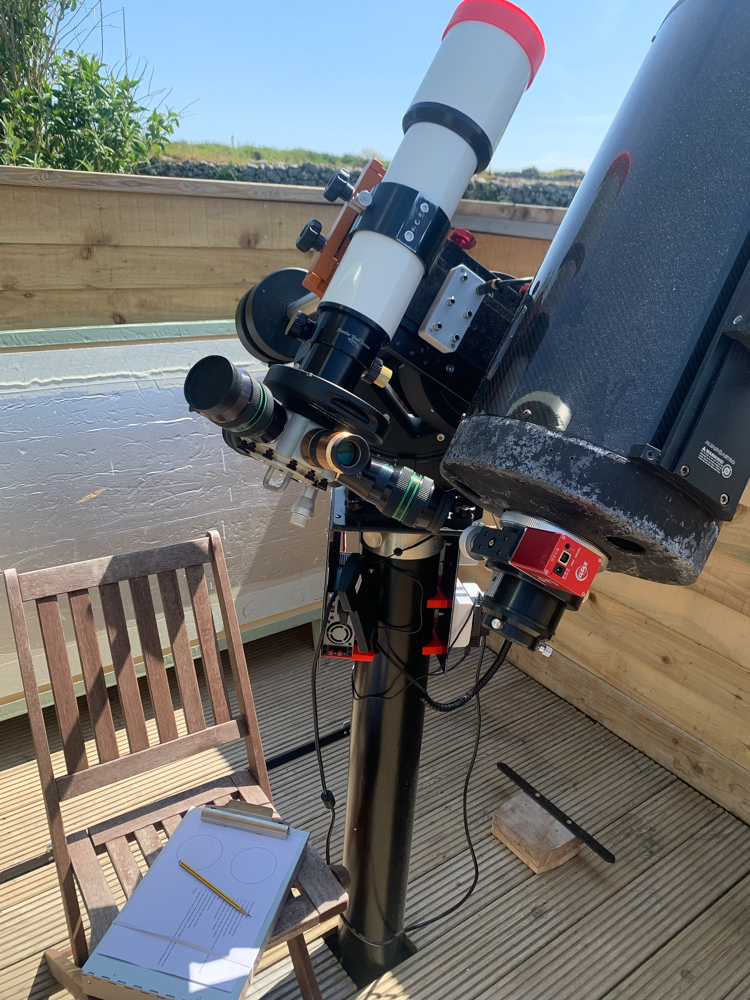
All finished and up and running making a solar observation through the TMB. Notice all the paint worn on the scope from the cover used to keep the moisture off in the old observatory. I’ll strip the scope down and repaint all the metalwork this coming winter.